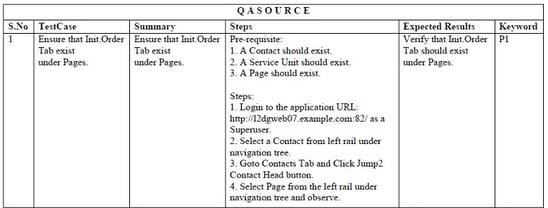
Within an effective QA software testing process, your test cases should speak to you. They provide answers and should be unambiguous.
Test cases help shape your product’s features and give meaningful direction to the product’s functionality. They help integrate application features to ensure they work as designed. With so much riding on the results, it is critical to the ROI of your product that your test cases are written well.
To create a test case, you must efficiently and comprehensively convert the objectives of your product into test conditions. It is a task that requires constant reference to your end product and the user experience. Above all else, it demands a higher level of concentration and organization than the development phase.
To help you and your engineers create the environment necessary to accomplish it all, we have outlined three practical examples of test cases that you can use as a guide.
The Elements of Effective Software Test Cases
Your test cases should be the simplest moving parts within the QA process. Your QA outsource partner should be able to help you reduce execution time by making your test cases more scenario-based (accounting for all possibilities), which cuts the overall number of test cases required. This is especially useful for script writing in automated testing.
The goal is to have your engineers write test cases that:
-
Are simple and identifiable;
-
Have the end-user experience in mind;
-
Avoid duplication;
-
Are repeatable;
-
Do not disrupt the test environment; and
-
Provide clear outcomes.
Establishing clear guidelines around these components at the beginning of the QA test phase should ensure that all your engineers are following the same template for each test case.
Let us take a quick look at how test cases fit within your broader DevOps environment.
Do Not Forget Your Developers
While your test cases are the everyday tools of your QA engineers, spare a thought for your development team. In today’s Agile environment, QA testing and development are tightly-knit elements of your overall product development. So it is important that your test cases be understood and are executable by your development teams. Thorough test cases can help your entire development lifecycle.
Here are a few best practices for creating test cases that can provide your developers with a better understanding of the full functionality and integration of their code:
-
Simplicity and relevance: Be directly applicable to the coding requirements of the function/module
-
Emphasize the user experience: Demonstrate the end-user’s perspective and expectations
-
Be informative: Help developers understand the environment and prerequisites for the functionality being created.
Keeping this internal audience in mind will give developers a better understanding of any changes and updated functionality—and you might gain a little more respect across the QA/Development divide by demonstrating your product knowledge.
Now on to the practicalities of test case creation.
1. Simple, Identifiable, and Repeatable

The example above tests for the existence of an “initialize order” tab within an application page. The more important revelation is the simple layout of the test case. The entire case consists of just six fields, and each field is self-contained. The inclusion of a broader “Steps” field guides the tester with concise instructions, and without referral to other elements.
These are granular conditions, so the Test Case, Summary, and Expected Results fields are going to contain little variance or unnecessary detail. Whatever the complexity of the particular test case, we are looking for binary pass/fail reports so the outcome can be rendered in simple keywords. The test case is also designed to yield repeatable results through multiple iterations.
2. The End-User Experience

Here’s another example of a verification of the existence of page elements, on an “Init Order” page. If a button marked ‘Submit Order’ is not displaying properly, that is a big problem. This example is one of potentially hundreds that will verify the user interface, ensuring that individual elements perform as intended. Checking elements of the end-user experience helps deliver the rock-solid performance your customers deserve.
3. Avoid Duplication, Do Not Disrupt the Test Environment

Our third example demonstrates how to simplify the test case process by grouping elements within common usage. This test verifies the existence of several elements, but rather than listing each within independent test cases, they are grouped together as elements of a common page. Again, the “Steps” field includes detailed instructions on accessing the specific page within the application URL, even if they do imply a measure of application knowledge and end with the broad term “observe”.
All of these examples are simple observe and report test cases. As such it is easy to avoid contaminating the test environment through any sort of intervention. In more complex testing such as configuration testing, it is especially important that test cases do not invite the tester to disrupt the test environment. Similarly, it is important to prevent the testers from returning the test environment to its pre-test state.
Lessons From 3 Examples of Test Cases in Software Testing
Your test cases are critical to your understanding of the product. They are the only way to get comprehensive answers on the quality of your build core. They are the difference between a successful launch and a bug-filled failure.
Create an environment and guidelines that allow your engineers to produce high-value test cases. Test cases need to be simple, identifiable, and repeatable so that you ensure your engineers are following the same template across the breadth of tests. Test cases should maintain the stability of your test environment at all times, and most importantly, should give unambiguous and easily-recordable results for the product insight you need to produce a high-ROI product.
QASource is a leader in the software testing industry. We have created more than a million test cases, which discovered nearly 500,000 critical defects combined. We will bring your product to market in the best possible condition. Make sure your QA process is built on a solid test case foundation. Contact us today for a free quote: Email info@qasource.com or call +1.925.271.5555 to get started.


